The navigable inland waterways of Flanders are not only for professional navigation and motorized pleasure crafts. Paddlers who take to the water with a manually propelled vessel such as a kayak or sup are also more than welcome. However, there are some important safety conditions that paddlers must take into account.
7 golden rules 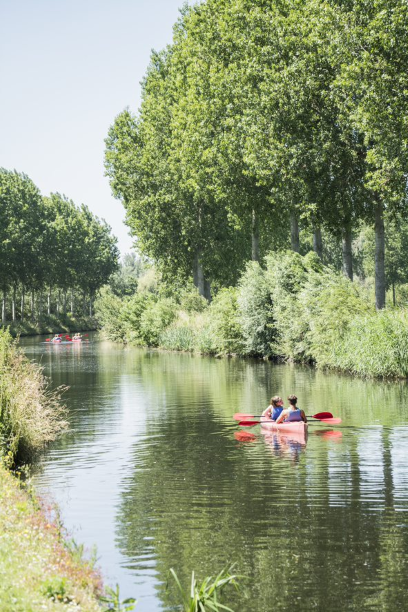
- Shipping traffic always has right of way.
- Keep to the starboard bank (to the right in the sailing direction).
- Display a white light visible from all sides if it is dark or in foggy conditions.
- Bear in mind that vessels have a blind spot.
- Cross the waterway perpendicularly and quickly.
- Preferably wear high-visibility clothing.
- Wear a buoyancy aid or life jacket.
Safety for everyone is an absolute priority. And that starts with the knowledge of the applicable regulations and sailing rules. Find here the overview of all applicable regulations on the Flemish waterways.
Get out of the (blind) corner courteously
By always giving way to shipping traffic, you already avoid many dangerous situations. Therefore, always keep to the starboard shore (right) in your muscle-powered vessel. Give shipping traffic the space it needs and bear in mind the blind spot of vessels. All vessels have a blind spot, meaning there is restricted visibility from the wheelhouse. The skipper therefore cannot see everything happening in front of the vessel. In addition, the response of these vessels is slower,
meaning they cannot easily stop or take evasive action. Courtesy is the golden rule on the waterways, just as it is on the roads!
Good intention? Good habit!
So taking into account the rules is a must when you are in a canoe, kayak or sup. Therefore, always cross the waterway perpendicularly and quickly, because the longer you are in the fairway, the more vulnerable you are as a paddler. At dusk or on foggy days, wearing a white light is also mandatory. You can increase your visibility even further by wearing distinctive clothing. Make it not only a good intention, but also a good habit.
Don't forget your swim or life vest!
A swim vest helps you float and is mainly used by active water sports enthusiasts. A life vest is made to save you: it always turns you onto your back with your face up if you end up in the water. When you practice a paddling sport, you put on a vest. In fact, a vest can save your life.
TIPS FOR PROPER AND SAFE USE OF YOUR VEST:
- Always wear your vest (merely carrying it "just in case" is not enough).
- A good motto is "On the water, vest on"!
- Make sure your vest is not too big or too small. A vest is a personal item - best to write your name in it.
- Wear your vest over your coat, not under it.
- Fasten the belt and all fastenings securely. Don't forget the crotch straps: they prevent the vest from slipping over your head if you end up in the water (or
if you are pulled back on board by the vest).
- Get advice on the right choice of vest. Relevant factors include the type of water sport you practice (and the desired freedom of movement) and on what kind of waters you'll be sailing, is the vest intended for a child or an adult, the required buoyancy and turning force (the capacity). Also, think carefully about the choice of a new or used vest. And don't forget to maintain and check your vest regularly.
Test your knowledge and review as needed!
Prohibition signs
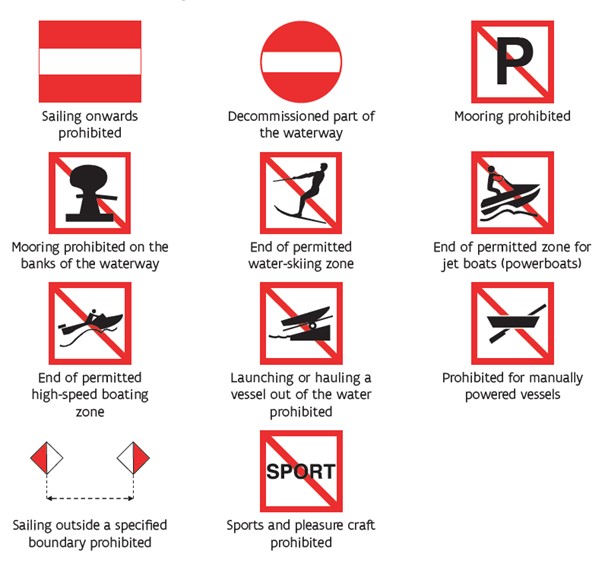
Mandatory signs
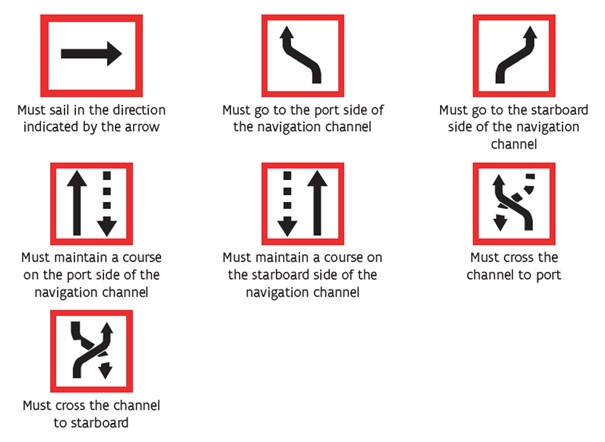
Designation signs
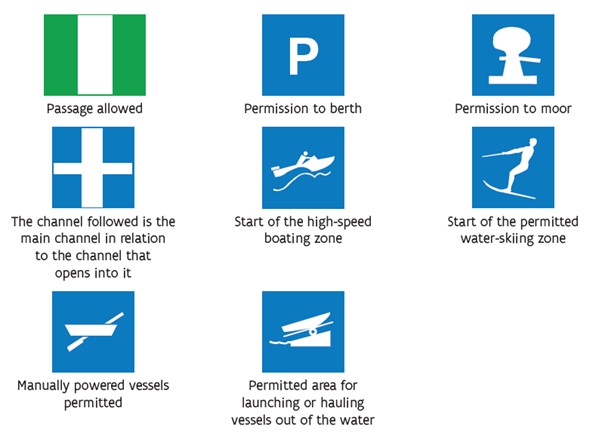
Sound signals

Optical signs
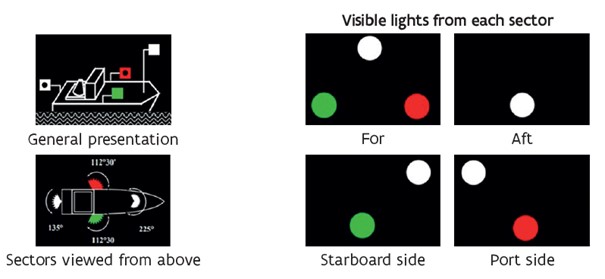
Read more...